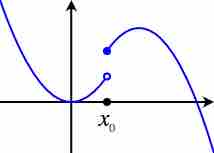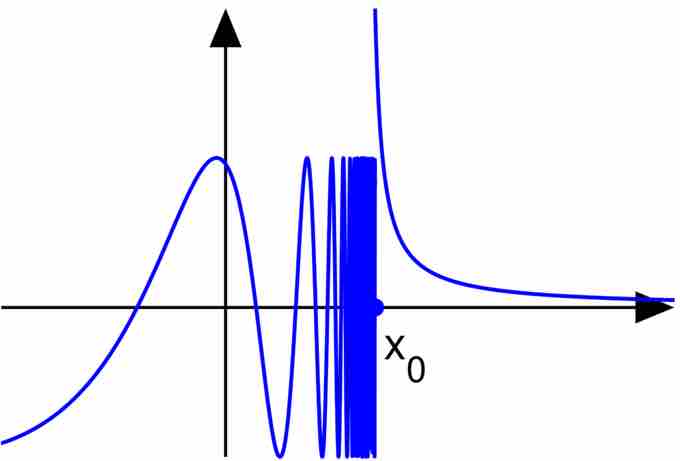The limit of a function is a fundamental concept in calculus and analysis concerning the behavior of that function near a particular input. Informally, a function
The notion of a limit has many applications in modern calculus. In particular, the many definitions of continuity employ the limit: roughly, a function is continuous if all of its limits agree with the values of the function. It also appears in the definition of the derivative: in the calculus of one variable, this is the limiting value of the slope of secant lines to the graph of a function.
To say that
Alternatively,

Nonexistence of Limit
The limit as the function approaches
Example: A function without a limit as seen in :

Essential Discontinuity
A graph of the above function, demonstrating that the limit at